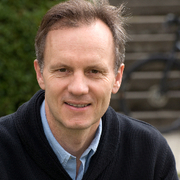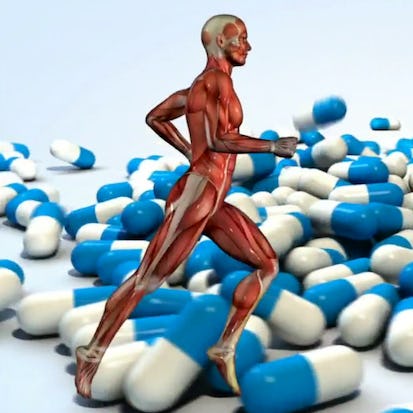- Level Foundation
- Duration 14 hours
- Course by University of Lausanne
-
Offered by

About
The objective of this course is to encourage a critical understanding of doping. To achieve this goal, this course will rely on a multidisciplinary approach that allow you to see how different disciplines get into a single object, in different perspectives and in often complementary ways. This approach will also allow us to appreciate the complexity of a subject like doping. Doping in sports is a complex practice whose definition and identification is the result of socially and historically constructed norms. This course offers to shed light on the processes that led to the use and prohibition of doping substances. Performance enhancement or physical transformation are two aspects of doping which are seen as problematic, yet even as we speak companies are making fortunes selling body improvement and other forms of “human enhancement” to us. These apparent contradictions will be analysed to show that beyond sanitary questions, doping raises many social, scientific and legal issues. In efforts to control doping, governments and sports authorities have put into place institutions responsible for defining what falls into the category of doping, but also what prevention, repressions and research methods to put into effect. This course will also explore biological control measures such as the biological passport, key legal dimensions, organisations that produce performance, as well as the sociological dimensions of doping. Besides the Professors of University of Lausanne, the best experts of doping are involved in this course: experts from an Anti-doping Laboratory (LAD- Lausanne-Switzerland), from the CAS (Court of Arbitration for Sport), from the UEFA (soccer), and from the WADA (World Anti-Doping Agency). Teaser: https://www.youtube.com/watch?v=20Q3eR_g7rU Main Learning Outcomes At the end of the course the participants will be able to : 1. Identify the “cultural” dimension of doping, that is as a historical practice linked to the transformation of social norms, 2. Go from a binary way of thinking - for or against doping - to an understanding of the complexity of this phenomenon which is biological, psychological and sociological, all at the same time, 3. Recognize the institutions, the actors and the practices of the fight against doping, 4. Explain how the social and organisational context influences individuals decisions and how this influence can be reduced by effective prevention measures, 5. Identify how the fight against doping is led and how testing is carried out.Modules
Course guidelines
1
Videos
- General Introduction
4
Readings
- Syllabus
- Discussion Forums guidelines
- Meet and greet forum instructions
- Facebook group Doping: Sports, Organisation and sciences
About us
3
Readings
- Teaching staff
- Field experts
- Development team
Module 1
1
Assignment
- Module 1 Quiz
6
Videos
- Introduction to Module 1
- 1- Defining doping
- 2- Substance use ordinary practice
- 3- The emergence of norms
- 4- Stabilising legal norms
- Conclusion of module 1
3
Readings
- Module 1 Learning Outcomes
- Suggested discussion
- References
Presentation
1
Assignment
- Module 2 Quiz
9
Videos
- Introduction to Module 2
- 1- Why do athletes give in to doping ?
- 2- Becoming a bodybuilder and using prohibited substances
- 3- Bodybuilder's attitude towards risk
- 4- The socialisation of cyclists and pharmacologies
- 5- Cyclists' careers and doping
- 6- The emergence of norms that define doping- Part I
- 7- The emergence of norms that define doping- Part II
- Conclusion of Module 2
3
Readings
- Module 2 Learning Outcomes
- Suggested discussion
- References
Presentation
1
Assignment
- Module 3 Quiz
6
Videos
- Introduction to Module 3
- 1-The role of the World Anti-Doping Agency
- 2-The UEFA's doping policies
- 3- The role of the CAS
- 4- Doping prevention policies in cycling
- Conclusion of Module 3
4
Readings
- Module 3 Learning Outcomes
- Suggested discussion
- References
- Additional documents on Wada and anti-doping agencies
Presentation
1
Assignment
- Module 4 Quiz
8
Videos
- Introduction to Module 4
- 1- How accredited laboratories work and how bioanalyses are carried out
- 2- The biological passport and longitudinal approaches
- 3-ADAMS -Web-base database management system
- 4- The forensic approach to doping
- 5- Atypical analysis results and the future of the fight against doping
- Conclusion of Module 4
- General Conclusion
3
Readings
- Module 4 Learning Outcomes
- Suggested discussion
- References
Final Assignment
1
Assignment
- Final Assignment
1
Readings
- Final Assignment instructions
Auto Summary
Discover the complex world of doping in sports with "Doping: Sports, Organizations and Sciences," a course offered by Coursera. Designed for personal development, this foundation-level course provides a multidisciplinary approach to understanding doping's cultural, biological, psychological, and sociological dimensions. Led by University of Lausanne professors and top experts from organizations like WADA and UEFA, the course covers historical practices, legal frameworks, and prevention measures. In just 840 minutes, learners will grasp the intricacies of doping and its regulation. Available through a Starter subscription, this course is ideal for anyone interested in sports, health, or ethics.

Fabien Ohl

